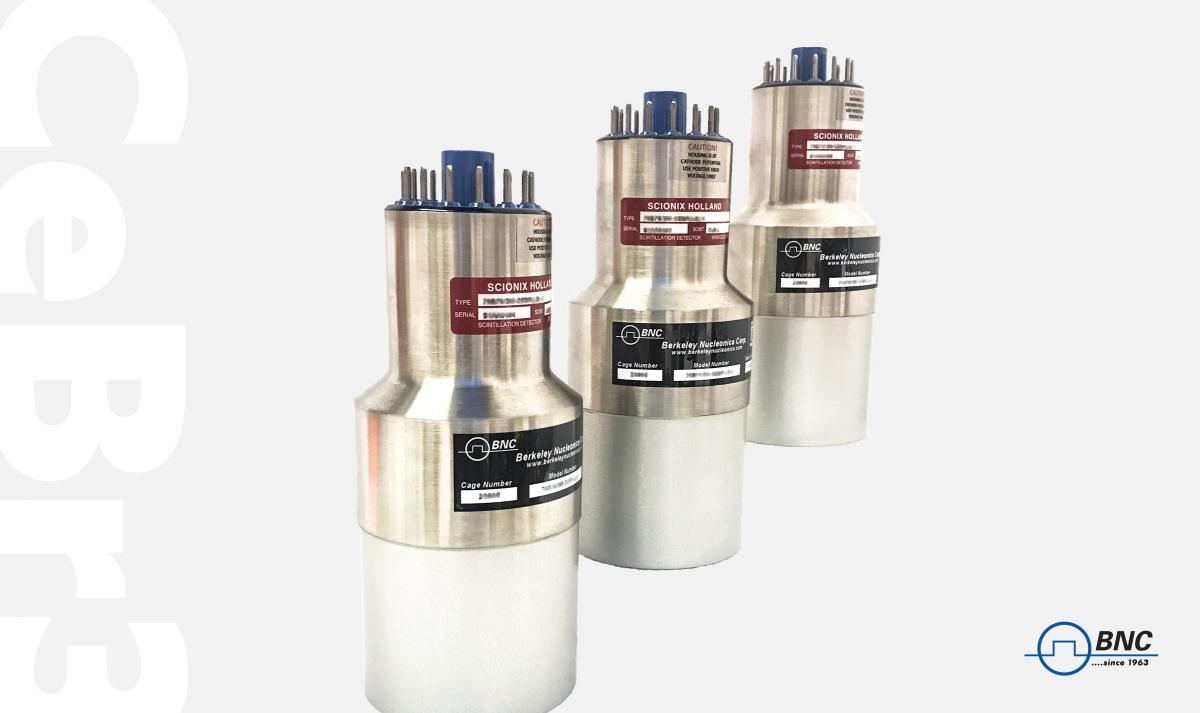February 11th, 2022 - Customizing your Scintillation Detector
With the great variety in assemblies, electronics, materials and crystals available for scintillation detectors, it can be a challenge to find the right fit for your application–even with some initial insights from your end. At Berkeley Nucleonics, we work to provide state-of-the-art configurations that are tailored to meet a broad range of requirements, and we work directly with you; our focus is on acting as the coordinator between your technical specifications and the instrument you will ultimately prefer for your needs.

But before we begin: please consider reviewing our new webpage on scintillation detector nomenclature. Model IDs can be difficult to understand at first. For instance, a 51B51/2M refers to a 51mm diameter, 51 mm height (2”x2”) NaI(Tl) crystal integrally mounted to a PMT with a 2 inch diameter, fitted with an external solid μ-metal shield. Being able to understand this nomenclature will drastically improve your ability to interface with our nuclear specialists, and ensure you receive the best support possible.
And to further the conversation, here are some questions you can expect from us when submitting an inquiry:
What scintillation material would you like? (NaI, LaBr, CeBr, CsI, etc)?
We can offer a wide variety of scintillators to be housed within your detector. Each material has its own set of physical properties, performance metrics, and (potentially) necessary adjustments to the model. For instance, NaI is hygroscopic, and thus requires additional protection from water damage in the form of an epoxy seal.
We carry data and specifications sheets for many of the materials we offer, available on request, to help you determine whether a specific crystal has the performance characteristics required by you.
What radiation type do you want to detect? (alphas, betas, gammas, x-rays, neutrons, etc)?
The radiation type is a sort of nexus for what ‘section’ of materials and electronics we will consider for the systems we intend to propose. As well, it is very helpful to also provide the intended energy range within that radiation type.
What is the operating condition? (lab, vehicle, space, oil well, etc.)?
This question addresses two key components of the detector’s configuration: firstly, it informs whether additional protection against vibrations, impacts, and drops will be necessary. The detectors we provide are, prior to additions, naturally protected against crystals or wires dislodging.
Secondly, the operating condition may provoke a change in the configuration’s form-factor. This is especially true when the unit is meant for an oil well, or to be couched within a pipe for monitoring: the more standard configurations may be unable to fit in these locations
What are the operating temperatures?
Prior even to causing damage, extreme temperatures affect the resolution of scintillation detectors. If the unit is to be used in a location with extreme heat or cold, it will be necessary to seek adjustments to the assembly to provide climate protection for the crystal. Some scintillators are more resistant to extreme temperatures than others, influencing that aspect of design as well.
When do you need delivery?
Lead times for units are, by default, in the range of weeks after receipt of order, due to a variety of circumstances from procurement to crystal growth. It is important that if you have a deadline for receiving a detector, that you provide us with this information–so we may determine whether a production schedule for your unit is tenable.
Quantity desired?
Purchasing detectors in bulk will apply a discount to your purchase. While the quantity affects delivery times, it is not iterative: i.e, a detector with a lead time of 7 weeks will not have a lead time of 14 weeks if two are purchased simultaneously.
Are complete systems desired or just crystals?
What sets state-of-the-art Scionix detectors apart is how their entire configuration–not just the metrics of their scintillator–can lend into achieving the best results possible. Aspects like the PMT, the window, the housing material and pin arrangement are all details that will be put into consideration when We can provide full systems or encapsulated crystals, but generally avoid raw crystal sales.
What is the application of the detection system?
If possible without revealing sensitive information, providing the intended application of an instrument is crucial to ensuring the appropriate configuration is offered. BNC and Scionix have a long history of past work, and can draw from experience within specific application areas to best assist you with your own needs.
Need an MCA?
Berkeley Nucleonics provides a wide array of Multichannel Analyzers for the purpose of reading out your scintillation detector:
-
The Topaz SiPM - a tried and true instrument suitable across a wide range of detectors.
-
The Plug-On bMCA - it fits directly onto standard 14-pin terminations.
-
The Model 970 - rugged, compact, and fantastic for fieldwork.
All units provided by BNC also come with free PC spectrum analysis software, and BNC can assist you directly with best fitting your proposed system to an MCA solution.
Are the crystals/detectors part of a larger system?
If the detector or encapsulated crystal is meant to be housed in a larger system, certain adjustments may be needed to ensure that all connectors and components match up. Any information here–as with the application–is extremely important and helpful.
